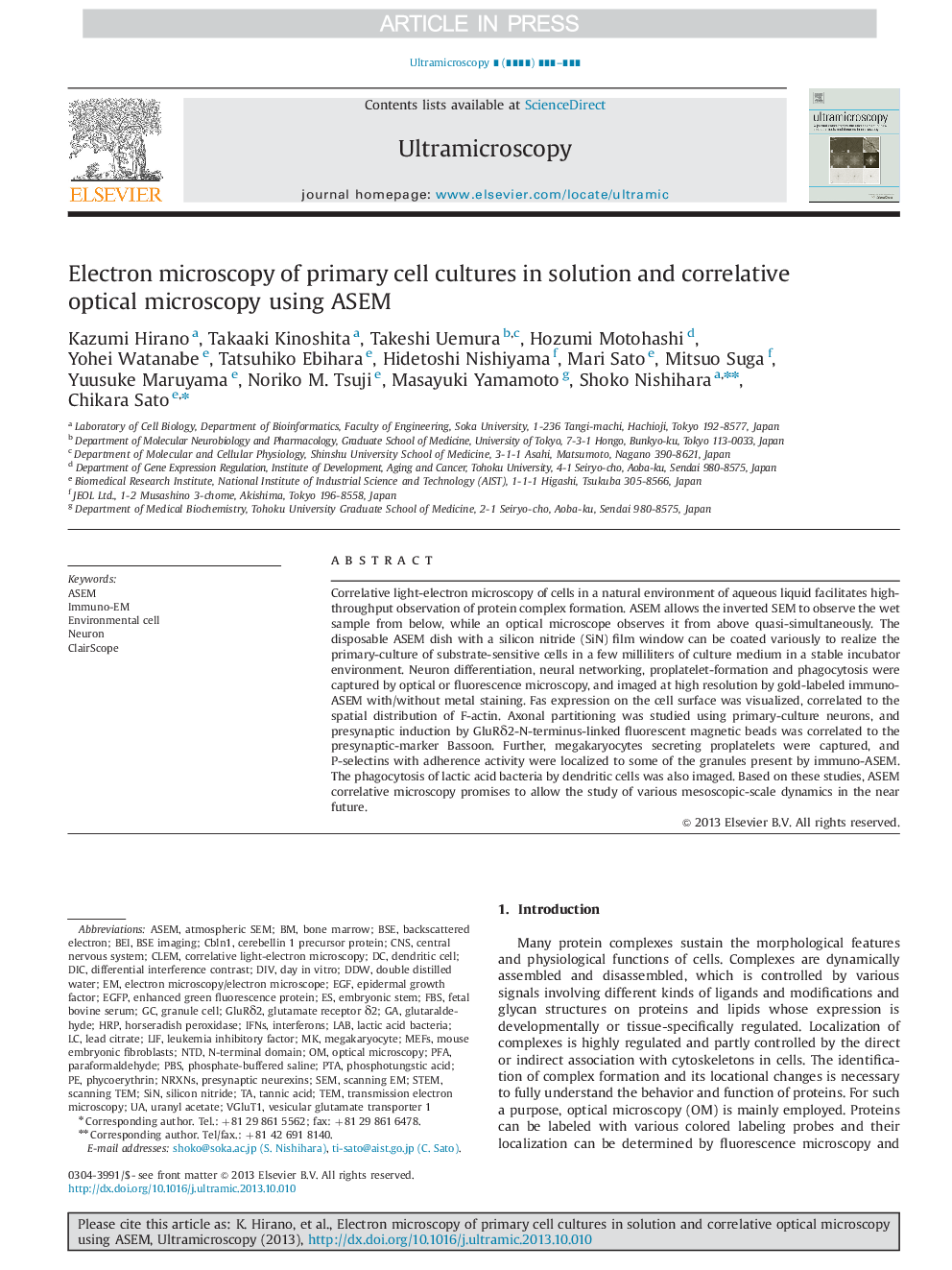| Article ID | Journal | Published Year | Pages | File Type |
|---|---|---|---|---|
| 8038336 | Ultramicroscopy | 2014 | 15 Pages |
Abstract
Correlative light-electron microscopy of cells in a natural environment of aqueous liquid facilitates high-throughput observation of protein complex formation. ASEM allows the inverted SEM to observe the wet sample from below, while an optical microscope observes it from above quasi-simultaneously. The disposable ASEM dish with a silicon nitride (SiN) film window can be coated variously to realize the primary-culture of substrate-sensitive cells in a few milliliters of culture medium in a stable incubator environment. Neuron differentiation, neural networking, proplatelet-formation and phagocytosis were captured by optical or fluorescence microscopy, and imaged at high resolution by gold-labeled immuno-ASEM with/without metal staining. Fas expression on the cell surface was visualized, correlated to the spatial distribution of F-actin. Axonal partitioning was studied using primary-culture neurons, and presynaptic induction by GluRδ2-N-terminus-linked fluorescent magnetic beads was correlated to the presynaptic-marker Bassoon. Further, megakaryocytes secreting proplatelets were captured, and P-selectins with adherence activity were localized to some of the granules present by immuno-ASEM. The phagocytosis of lactic acid bacteria by dendritic cells was also imaged. Based on these studies, ASEM correlative microscopy promises to allow the study of various mesoscopic-scale dynamics in the near future.
Keywords
EGFVGLUT1Cbln1PTAMEFsDDWPFANTDGluRδ2HRPCLEMeGFPDICASEMLIFPBSScanning TEMLead citrateFBSScanning EMBSEIFNsdouble distilled waterLABTannic acidPhosphotungstic acidBackscattered electronUranyl acetateImmuno-EMTeminterferonsLactic acid bacteriasinvesicular glutamate transporter 1N-terminal domainCNSDIVday in vitroStemembryonic stemfetal bovine serumDendritic cellEnvironmental cellgranule cellcentral nervous systemepidermal growth factorleukemia inhibitory factorphycoerythrinPhosphate-buffered salineSEMbone marrowmouse embryonic fibroblastsMegakaryocyteTransmission electron microscopyCorrelative light-electron microscopyOptical microscopyNeuronSilicon nitrideBEIparaformaldehydeHorseradish peroxidaseenhanced green fluorescence proteindifferential interference contrastGlutaraldehyde
Related Topics
Physical Sciences and Engineering
Materials Science
Nanotechnology
Authors
Kazumi Hirano, Takaaki Kinoshita, Takeshi Uemura, Hozumi Motohashi, Yohei Watanabe, Tatsuhiko Ebihara, Hidetoshi Nishiyama, Mari Sato, Mitsuo Suga, Yuusuke Maruyama, Noriko M. Tsuji, Masayuki Yamamoto, Shoko Nishihara, Chikara Sato,
